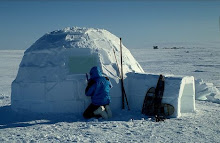The objective correlative is the use of objects, symbols or descriptions in art by which certain emotions are evoked. For example, if you are watching a movie in which there are people dressed in black, carrying umbrellas in a cemetery under a thick voer of dark rainclouds while solemn organ music intones in the background, the driector is obviously tying to evoke a feeling of grief, sadness and loss, such as one would feel at a funeral.
Consider, then if this scene continued on to show a single mourner, a woman, turning away from the grave. She raises her face under her umbrella, and sees a ray of golden light piercing through the grey clouds. What emotions might this evoke in a viewer?
Eliot thought that by using a combination of many object together, he was creating a formula, similar to an algebraic equation, that would invoke meaning across the board to any reader. (And you thought there was no Math in English. Hah!)
It goes something like this:"black clothes + umbrellas + cracked gray headstones + darkening sky + rain droplets + faces of stone angels + veil + wedding ring + faint sobbing + turning away" is an artistic formula that equates with a complex sense of sadness. Throw in: raised face + ray of sun + piercing cloud = hope for the future?
Eliot uses this type of imagery in the poem "The Love Song of J. Alfred Prufrock".
When Eliot uses the phrases:
"When the evening is spread out against the sky
Like a patient etherised upon a table;"
in lines 2-3, and then
"And when I am formulated, sprawling on a pin,
When I am pinned and wriggling on the wall,"
in lines 57-58, it brings forth an image of helplessness, of feeling ensnared, of impotence.
As you read "Prufrock", be aware of the feelings that Eliot tries to call forth by his use of images juxtaposed with each other. What emotions do you feel when you read certain passages? What words contribute to those emotions? How does this contribute to the overall interpretation of the poem?
Some additional info you may find useful:
The first few lines of the poem are in Italian, a passage from Dante Alighieri's Inferno (Canto 27, lines 61-66). They are spoken by Guido da Montefeltro in response to the questions of Dante, who Guido supposes is dead, since he is in Hell:. The flame in which Guido is encased vibrates as he speaks: "If I thought that that I was replying to someone who would ever return to the world, this flame would cease to flicker. But since no one ever returns from these depths alive, if what I've heard is true, I will answer you without fear of infamy."
A link to Hamlet and His Problems, the original essay by Eliot.

No comments:
Post a Comment